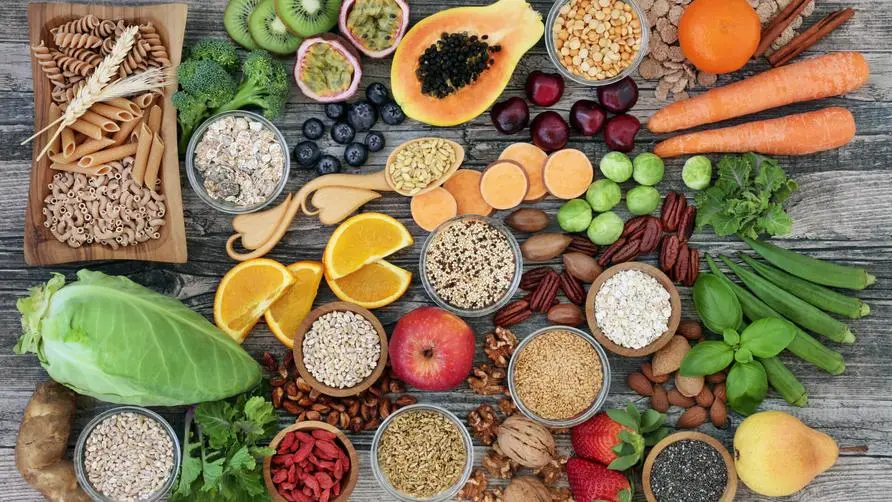Don't you need to avoid red meat and dairy products? The European Society of Cardiology recommends a "pure diet": eating 6 foods regularly reduces the risk of cardiovascular disease and death

Correct eating habits, a regular routine, and moderate exercise are crucial to maintaining cardiovascular health. Now scientists have further confirmed that the combination of “six kinds of foods” has a significant protective effect on cardiovascular disease. The European Society of Cardiology published a study in its affiliated journal “European Heart Journal” (EHJ), confirming that a “PURE Healthy Diet” containing six major food groups can help reduce the occurrence of cardiovascular events and mortality.
Don’t you need to avoid red meat and dairy products? European Heart Association promotes “pure diet”
A research team from Canada used the results of the Prospective Urban Rural Epidemiology (PURE) study to evaluate the healthy diet of 147,642 subjects from 21 countries. The scoring items are based on six foods, each of which is associated with a significantly lower risk of death: fruits, vegetables, nuts, legumes, fish and dairy products. The research team calls this eating approach “pure” PURE diet".
When the team applied the Purity Diet Score to five separate studies (244,597 people in total) to measure health outcomes in participants, they found that both healthy people and those with cardiovascular disease experienced higher health outcomes through a Purity Diet. points; those who consumed more fish and full-fat dairy products were associated with a lower risk of cardiovascular disease and death, as were moderate intakes of unprocessed meats and whole grains.
According to the food intake according to the diet score level, a “healthy diet” includes 563.1g (5 servings) of fruits and vegetables, 48.0g (0.5 servings) of beans, 28.2g (1.2 servings) of nuts, 26.1g (0.3 servings) of fish, 185.5 g (2.0 servings) of dairy, 54.5 g (0.5 servings) of red meat, and 22.1 g (0.3 servings) of poultry. Each nutrient is mainly in appropriate amounts, that is, 56% of energy comes from carbohydrates, 27% from fat (8.9% from saturated fat, 15.0% from unsaturated fat), and 17.2% from protein.
In contrast, the “unhealthiest” diet is high in carbohydrates (accounting for 66% of total energy), low in fat (accounting for 20% of total energy; 6.3% of which comes from saturated fat and 10.7% from unsaturated fat), and is relatively low in fat. It is low in protein (13.5% of energy), with low concentrations in red meat (24.1g) and poultry (10.3g).
What are the benefits of a “pure diet”? Study: Helps reduce risk of cardiovascular events and death
Analysis by the research team showed that a 20% increase in pure diet score was associated with a 6% lower risk of cardiovascular events (such as stroke, myocardial infarction, arrhythmia, heart failure) and an 8% lower risk of mortality. Study author Andrew Mente said that in this study, the key to developing healthy eating habits may be to consume a variety of “whole foods” in moderation, rather than drastically restricting the intake of a few food groups.
“Insufficient intake of healthy foods, such as reduced consumption of vegetables or fruits, may be more problematic than overconsumption of certain nutrients or foods (e.g., saturated fat, full-fat dairy, meat). This also results in lower pure Diet scores have an impact on mortality and cardiovascular disease risk around the world,” Mente explained.
Mente believes that considering that people with the lowest dietary scores also have lower fat intake, especially saturated fat (i.e., full-fat dairy products), the current dietary goals advocate limiting excessive saturated fat and dairy consumption. Maybe “it’s not necessary”. In addition, moderate consumption of unprocessed red meat and poultry may not have as great a negative impact on heart health as outsiders think.
How to eat a pure diet to gain the greatest benefits? Experts recommend taking “6 kinds of foods” regularly!
Overall, Mente points out that the pure diet encourages people to eat more of the following six foods in their lives. The best average daily or weekly intake is:
2-3 servings of fruit every day
Eat 2-3 servings of vegetables every day
1 serving of nuts a day
2 servings of dairy products per day
Eat 3-4 servings of beans per week
Eat 2-3 servings of fish per week
In addition, 1 serving of whole grains, unprocessed red meat, or poultry per day can replace some of the above foods.
Mente believes that the advantage of this document is that it includes studies on the eating habits of nearly 245,000 people from 80 countries with different economic levels. The experimental results may be applicable to most people around the world and based on existing food types and cultural preferences. , further adjust dietary recommendations. For example, vegetarians can achieve appropriate dietary scores by consuming plenty of fruits and vegetables, nuts, legumes, whole grains, and dairy products.
“In all regions of the world, but especially in low-income countries, dietary inclusion of six healthy foods was significantly associated with reduced cardiovascular and mortality risks, and similar associations were found for including meat or whole grains in the diet score. “We believe that if the above-mentioned six cardiovascular protective foods are not consumed enough, the risk of death and vascular events may be higher among adults worldwide.”
Source:
Further reading:





